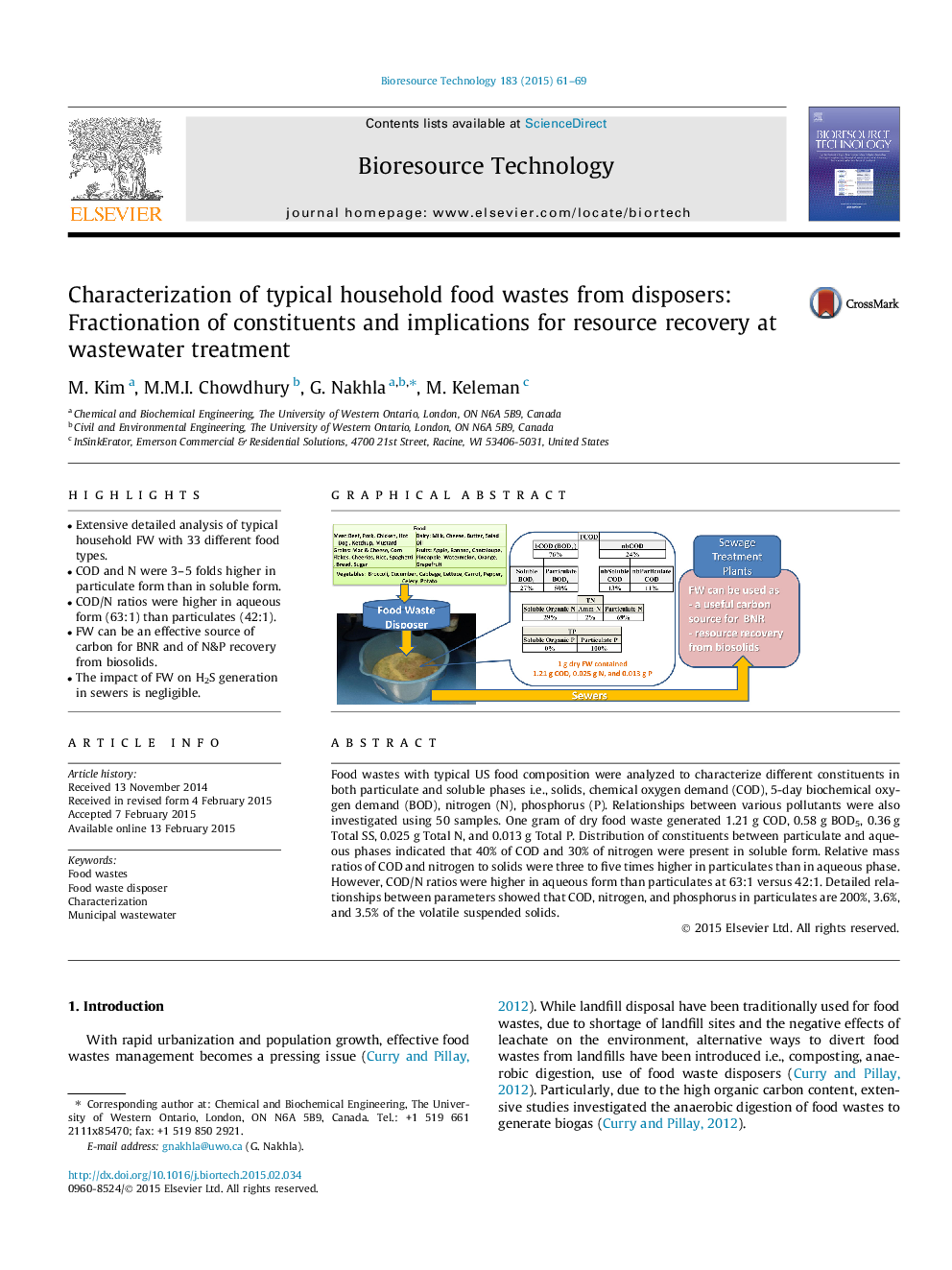| کد مقاله | کد نشریه | سال انتشار | مقاله انگلیسی | نسخه تمام متن |
|---|---|---|---|---|
| 679865 | 1459960 | 2015 | 9 صفحه PDF | دانلود رایگان |
• Extensive detailed analysis of typical household FW with 33 different food types.
• COD and N were 3–5 folds higher in particulate form than in soluble form.
• COD/N ratios were higher in aqueous form (63:1) than particulates (42:1).
• FW can be an effective source of carbon for BNR and of N&P recovery from biosolids.
• The impact of FW on H2S generation in sewers is negligible.
Food wastes with typical US food composition were analyzed to characterize different constituents in both particulate and soluble phases i.e., solids, chemical oxygen demand (COD), 5-day biochemical oxygen demand (BOD), nitrogen (N), phosphorus (P). Relationships between various pollutants were also investigated using 50 samples. One gram of dry food waste generated 1.21 g COD, 0.58 g BOD5, 0.36 g Total SS, 0.025 g Total N, and 0.013 g Total P. Distribution of constituents between particulate and aqueous phases indicated that 40% of COD and 30% of nitrogen were present in soluble form. Relative mass ratios of COD and nitrogen to solids were three to five times higher in particulates than in aqueous phase. However, COD/N ratios were higher in aqueous form than particulates at 63:1 versus 42:1. Detailed relationships between parameters showed that COD, nitrogen, and phosphorus in particulates are 200%, 3.6%, and 3.5% of the volatile suspended solids.
Figure optionsDownload as PowerPoint slide
Journal: Bioresource Technology - Volume 183, May 2015, Pages 61–69
